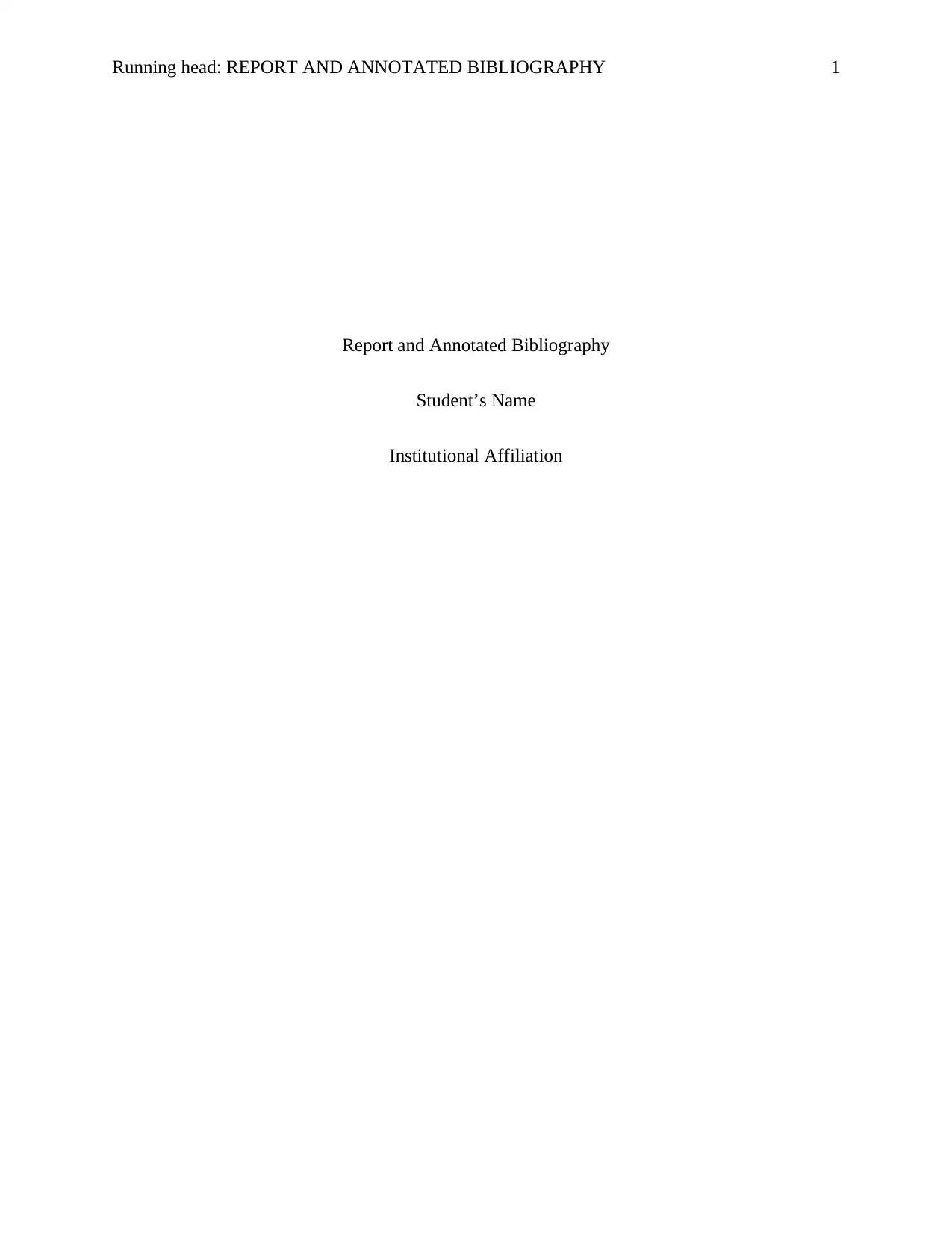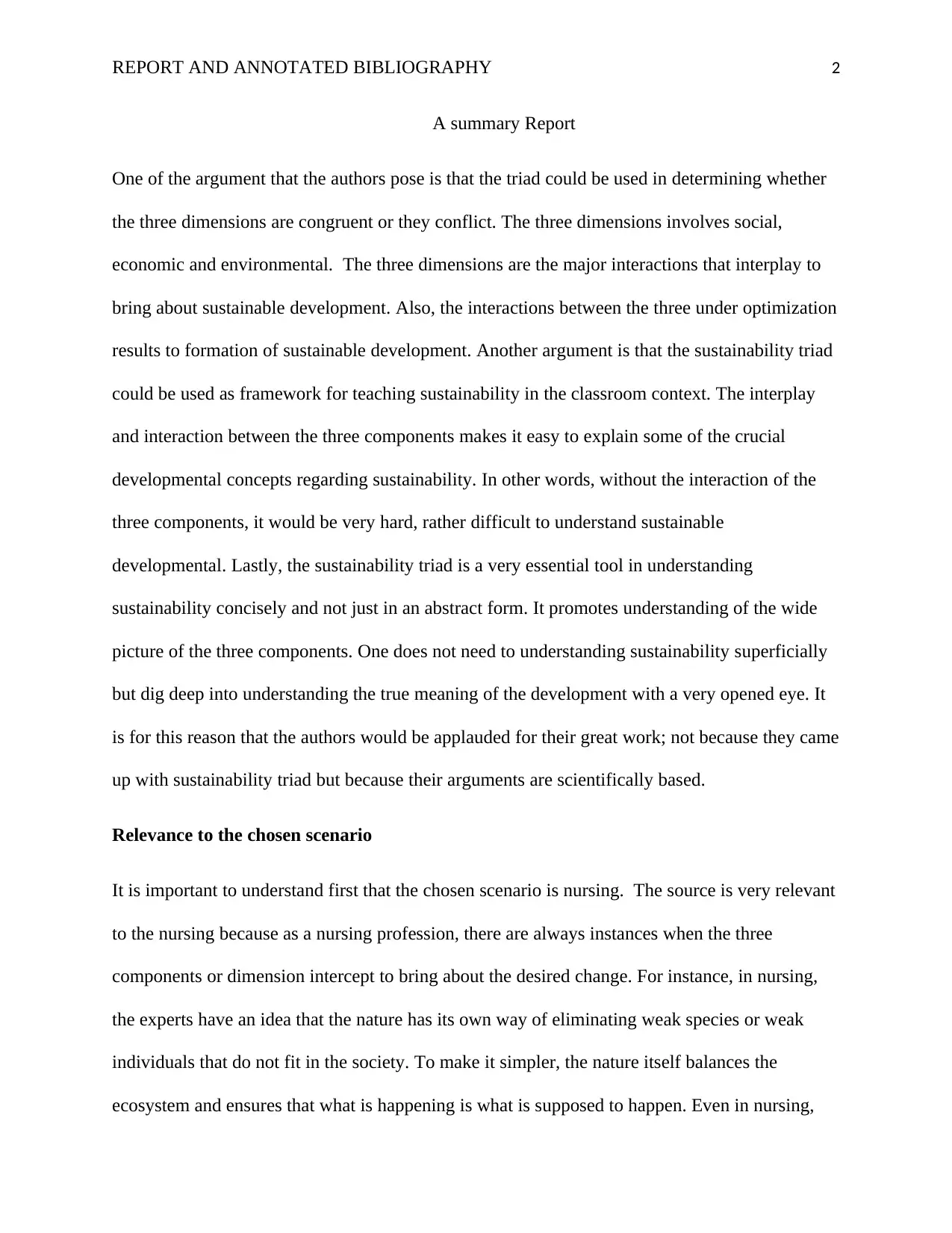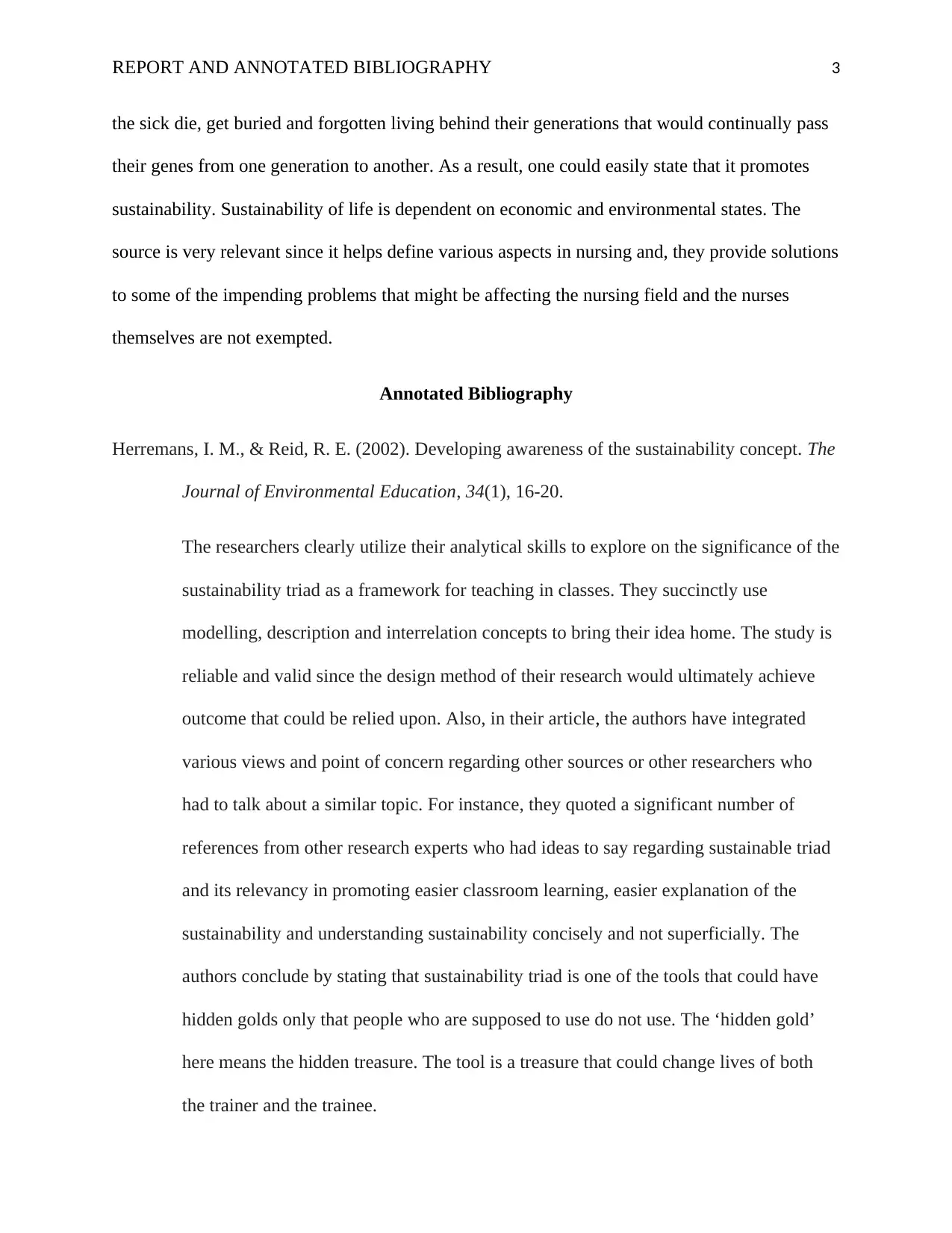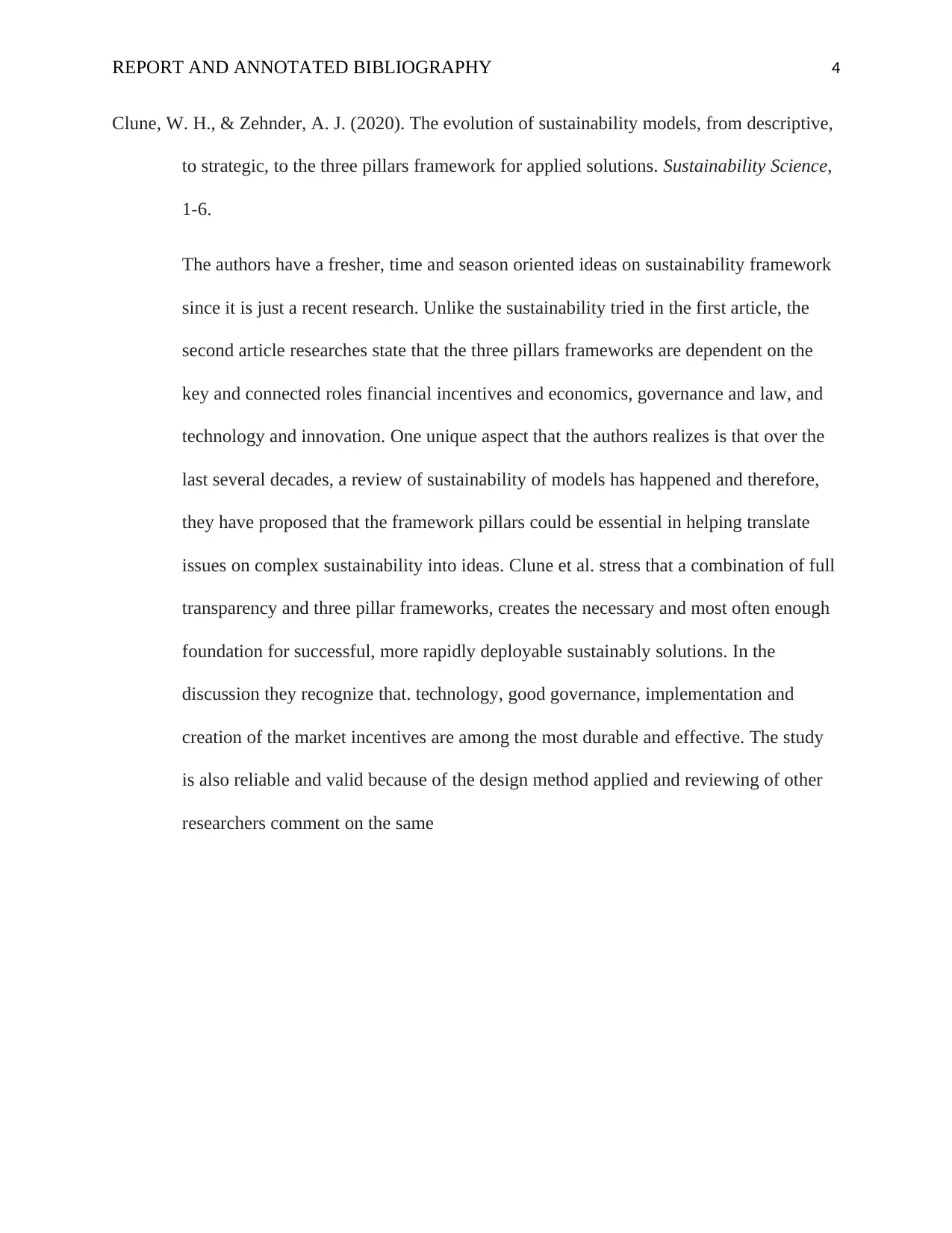CUC100 Assessment 2: Report and Annotated Bibliography Analysis
VerifiedAdded on 2022/08/01
|4
|913
|24
Report
AI Summary
This report and annotated bibliography analyzes the concept of sustainability, focusing on the sustainability triad and its application in the nursing field. The report summarizes key arguments from two articles: one emphasizing the triad's role in understanding the interplay of social, economic, and environmental dimensions, and the other discussing the evolution of sustainability models, including the three-pillar framework dependent on financial incentives, governance, and technology. The report highlights the relevance of these concepts to nursing, emphasizing how the triad's dimensions intersect to bring about desired changes in the profession. The annotated bibliography provides summaries and relevance assessments of the cited articles, discussing their methodologies, findings, and implications for understanding sustainability in both theoretical and practical contexts. The document examines how the authors use modeling, description, and interrelation concepts to explain their ideas. The bibliography also covers the evolution of sustainability models, from descriptive to strategic, and the significance of the three pillars framework in translating complex sustainability issues into actionable ideas.
1 out of 4








![[object Object]](/_next/static/media/star-bottom.7253800d.svg)